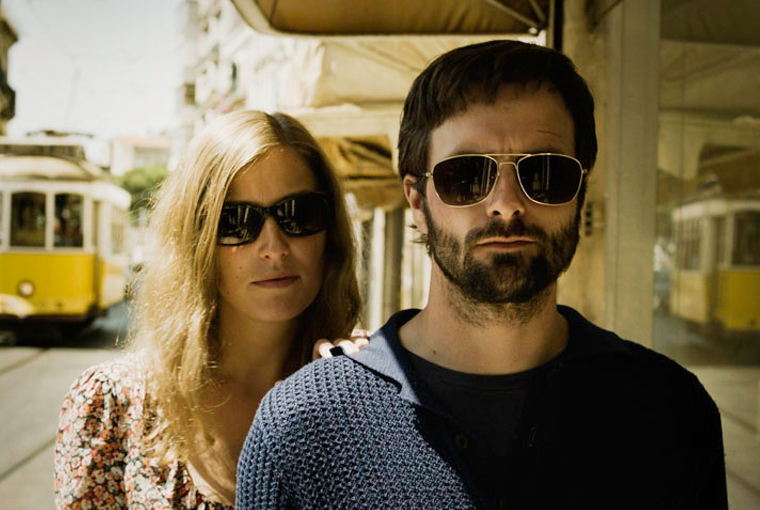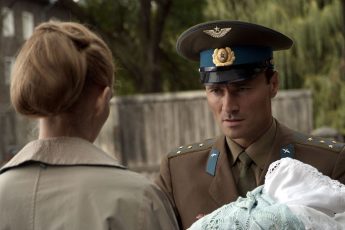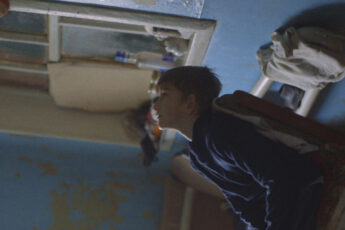
Ian, a blind man who can walk without a cane, arrives at a clinic in a Lisbon monastery to teach some slightly hostile children to do the same. His methods — echolocation and sound-mapping — are unorthodox and occasionally risky, and the head clinician begins to clash with him over his refusal to abide sighted “minders” during his classes. As he gradually wins over the class, Ian begins a cagy romance with Eva, a stubbornly independent blind woman who lives down the hall.
So far, so conventional. But Andrzej Jakimowski’s Imagine has greater ambitions than to remake a Dead Poets’ Society for the blind. Ian is (irony fully intended, at least by Jakimowski) a visionary, someone who can illuminate space without being able to see it. He is both accessible and remote. Accessible, because his role in the film is to reveal his brilliant technique; remote, because he may simply be a liar. The children and Eva begin to doubt that he truly perceives everything he speaks about: a cat drinking milk, a secret gardener cutting roses, and a massive (and heavily symbolic) barge somewhere not far away. The audience is encouraged to nurse suspicions as well. His boyish good looks hide a certain coldness, hubris and perhaps even perversity. In one scene, when his student Serrano challenges him to prove he’s truly blind, Ian pops out his glass eyes and drops them in the panicking boy’s hands. His mysterious, off-putting personality draws the film away from a more didactic-humanist course.
But the most interesting tension in the film derives from the editing and camerawork. In film studies, the point-of-view shot is generally seen as a director’s attempt to bring the audience in line with a character’s state of mind. To name only the most famous examples, Hitchcock gleefully used the shot to manipulate the audience into identifying with a psychopath; Laura Mulvey’s famous thesis of the male gaze relied on an equivalence of the camera’s gaze and its intended viewers’. In both cases, the POV shot relies on the viewers’ easy recognition of an overt emotion: fear or desire, most notably.
Imagine opens with several POV-like shots that complicate the game both because the protagonist is blind and because his motivations and emotions are far from clear. The very first shot is an extremely long focus-pull from whiteness, to an incomprehensible blur, to a sharply-defined image of a gate in a whitewashed wall. Shortly afterward, Ian enters the scene. Did we begin in his world and slowly transition to the world of the seeing? Or are we merely witness to his mental reality’s coalescence? Jakimowski wants to prove that there is no such thing as an absolutely true perception of the world, for the sighted or the blind. The pigeon fluttering through the sky is there, no doubt, but in the filmic world, are its white feathers against a brilliant blue sky a reflection of reality or Ian’s imaginative reconstitution? The film’s soundtrack exaggerates and even poeticizes everyday sounds as Ian might hear them, making the second theory seem more probable.
Unfortunately Jakimowski does not quite define this technique and rather undermines it. In the end, he offers us visual evidence to prove Ian’s genius — a choice that estranges us from the blind protagonists, who learn to perceive solely through sound. Ian’s skills are truly amazing. Doubtless, Jakimowski wanted to pay tribute to the real-life Alejando Navas, who coached the actor Edward Hogg in the role of Ian; dispelling any suspicions of Ian as a charlatan could be a mark of respect to the real man. But it may have made the film less interesting. Still, Imagine is a worthwhile experiment and a film that strives to embody a truly unconventional point of view. It avoids cliche even if it doesn’t achieve perfect coherence.




Leave a Comment